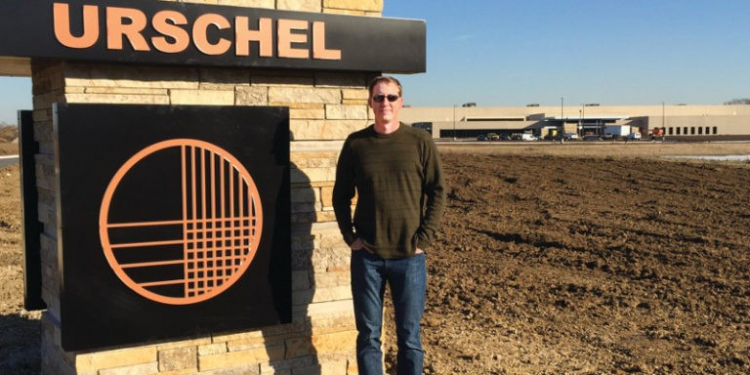What began with one man’s invention more than 100 years ago turned into a company that today sells equipment in 120 countries around the world. That is the story of Urschel Laboratories Inc., one of the leading companies in the United States that provide food cutting technologies. Urschel builds machinery for a large range of different industries, but potato processing leads the amount of machines sold in their vegetable and bakery sector.
Aleksandar Stajcic
Potato Processing International spoke with Patrick Urschel, President of Urschel Laboratories, Inc., who revealed the company’s approach to business and how this has led to its success. Urschel also spoke about plans for moving into their new headquarters facility in 2015, their approach to emerging markets, employment strategies, and many other business related topics.
PPI: Urschel was founded by William Urschel in 1910; what did he invent and for what purpose?
In 1908, William Urschel received his first patent for the Gooseberry Snipper and continued to improve on the design. The company was founded in 1910 and was initially named the Urschel Gooseberry Snipper Factory. The small shop was set-up next to William’s residence. In the area where William lived there had been many gooseberry farmers. Gooseberry ends and blossom ends had up to this point been removed manually; Urschel’s machine could do the work of 100 workers in one day.
PPI: Which food processing industry made the biggest demands in terms of industrial cutters at the time?
This period saw the beginning of a canning revolution. For example, in Michigan, a state north of Indiana, there had been many green bean processors that were canning green beans. The cans contained beans cut into one and a half or two inch long segments. The majority of industry equipment used at this time was being employed for canning.
PPI: When was the first Urschel potato cutting machine developed and for what producer and type of potato cuts?
According to our records, the Model 6 was the first cutting machine that cut root vegetables. The Model 6 was designed to cube vegetables, fruits and par-boiled frozen chicken. Its capacity was estimated at 4000 lb per hour when making 3/8 inch cubes. The customer had a choice of two dice sizes: 3/8″ or 1/2″.
The Model 6 was introduced in the 1930s. We are uncertain as to the particular company that first approached us, or where the inspiration for this machine came from.
A major player in the history of potato cutting is the Model G dicer, first introduced in 1956. The machine specialized in the production of straight or flat-cut French fries. The Model GK soon followed, which specialized in producing the popular crinkle cut potato fry cut. The G series has changed over the years to meet the needs of processors and has remained a strong line of dicers for us over the years.
Speaking of the G, we have just introduced a brand new dicer, the Sprint 2, which combines the footprint and a similar discharge/infeed height of the G series dicers, along with the cutting advancements found in our popular newer DiversaCut Sprint® Dicer. We recently displayed this for the first time at Pack Expo in Chicago and it was very well-received by the food processing industry.
PPI: For how many types of products do you provide cutters and other machinery today?
Too many to even list; in the thousands. We used to say that in the US, in grocery stores, 80 per cent of the food that the average citizen eats every day has been processed using Urschel machinery. This number is not nearly as high in Europe, however.
PPI: How many different types of equipment do you produce today and what are they?
We have produced more than 50 different models of cutting equipment ranging from slicers, dicers, granulators, shredders and other types such as the VSC segment cutter and the Comitrol line of milling equipment. In addition to cutting equipment, we manufacture different honers on which to sharpen the different types of blades used in our cutting machinery.
PPI: How many of the cutting machinery are for cutting potatoes?
The majority of all of our cutters will cut potatoes in different ways. My great uncle was once asked by a customer which of our machines can make mashed potatoes; he responded, “Every single one”. It all depends on how the machine is set up.








